EOS R10: A Petite, Power-Packed Entry to the EOS R System
On 24 May 2022, Canon announced its first EOS R system cameras to feature an APS-C format sensor. Smaller than the EOS R7, its higher-end sibling, the EOS R10 is a powerful shooter in its own right, equipped with features such as high-speed continuous shooting at up to 23 fps, deep learning-based subject recognition and tracking abilities, and other impressive specifications while boasting the lightest body in the EOS R series. Packed full of powerful photography and videography features that have become standards in this new era, it expands possibilities for intermediate and advanced photography enthusiasts keen for a more wallet-friendly first taste of the EOS R system.

One tiny body, immense speed, power and possibilities
One tiny body, immense speed, power and possibilities
In this era where photos and videos can be easily shot on a smartphone, what can one expect from a camera? Here’s an idea of some of them:
- High image resolution and image quality that support large format printing
- Autofocusing (AF) that accurately locks on and tracks even subjects that move unpredictably
- High-speed continuous shooting that enables capturing moments many times faster than what bare human eyes can see
- Ample options for video creation as a form of expression, such as 4K, HDR, and High Frame Rate video
Once found only on higher-end camera models, these are now new standards expected of today’s cameras. And the EOS R10, as Canon’s new APS-C camera designed for standard everyday use, packs them into a small, lightweight body that’s easy to have on you all the time—right beside your keys, wallet, and smartphone.

Approx. 429g: The lightest camera body in the EOS R series
Designed as an entry-intermediate model, the EOS R10 is similar in positioning to the EOS 850D. However, it shares some powerful specifications more often associated with higher-end cameras like the EOS 7D Mark II, such as its fast continuous shooting speed. It also leverages the benefits of the mirrorless camera system, manifesting in a body that is smaller and lighter than the EOS 850D.
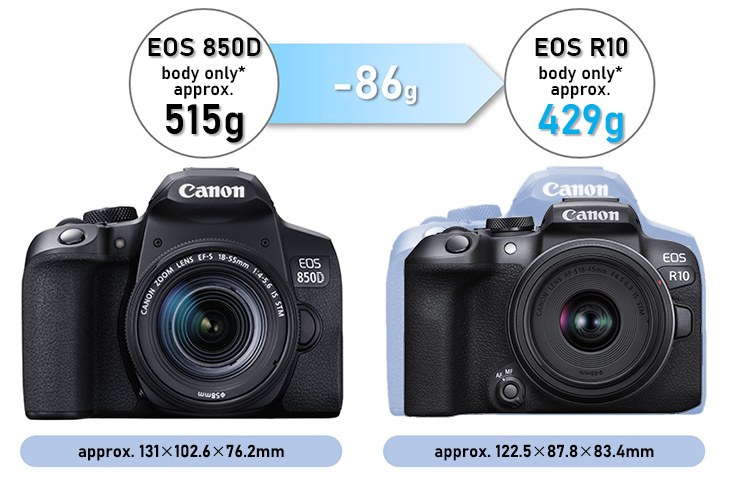
*Including the battery and memory card
Comparison with other EOS R series cameras

*approximate weight; includes battery and memory card.
One of the highlights of the EOS R series is its adoption of the mirrorless camera system, which enables smaller, lighter camera bodies. The EOS R10 takes it further, leveraging on the smaller APS-C sensor and optimising materials and design to further reduce size and weight. As a result, the EOS R10 is currently the lightest camera in the EOS R series, weighing approximately 429g**—less than a 500ml plastic bottle of mineral water.
That’s light enough to alleviate the strain of a camera hanging around your neck as you spend the day exploring a new place, and small enough to fit into the bag you take to school, work, or for leisure activities. Perfect for being there to capture the picture-worthy (or video-worthy) moments that may occur any day, any time.
**CIPA standards, including battery and memory card
Tip: Use an RF-S lens to take full advantage of the EOS R10's compact size and weight. They are designed specifically for APS-C EOS R system cameras! See: Canon’s First Two RF-S Lenses Make Their Debut
Up to 15 fps/23 fps continuous shooting, RAW Burst mode
High-speed continuous shooting for those blink-and-you-miss-it moments

The EOS R10 boasts among the highest continuous shooting speeds in the EOS R system – up to 15 fps with the mechanical shutter, just like the EOS R7, and up to 23 fps with the electronic shutter, both speeds including AF and AE tracking. That’s on par with those on professional cameras, and will allow you to capture and freeze fast action and rapidly changing moments like never before, in scenes such as sports, playing children, and even your hyperactive pet.
In addition, the EOS R10 is also equipped with the RAW burst mode, which uses the electronic shutter to shoot cropped, 13.57-megapixel (4512×3008) RAW format images at up to 30 fps, with each burst sequence recorded as a 14-bit RAW file. The mode supports pre-shooting, which, when enabled, records images from up to 0.5 seconds before the shutter button is pressed, increasing your chances of capturing the intended moment.
*The actual continuous shooting speed depends on various factors such as battery type/remaining charge, temperature, built-in Wi-Fi (‘On’ or ‘Off’), flicker reduction, shutter speed, aperture value, type of lens, etc. For more information, please refer to the user manual.
Advanced deep learning-based subject detection capabilities
100% AF coverage; advanced subject detection based in deep learning
The deep learning-based EOS iTR AF X subject recognition and tracking system on the EOS R10 is equivalent to the one on EOS R3. These support the AF system with advanced, accurate, and tenacious subject detection and tracking during still photography and video shooting.
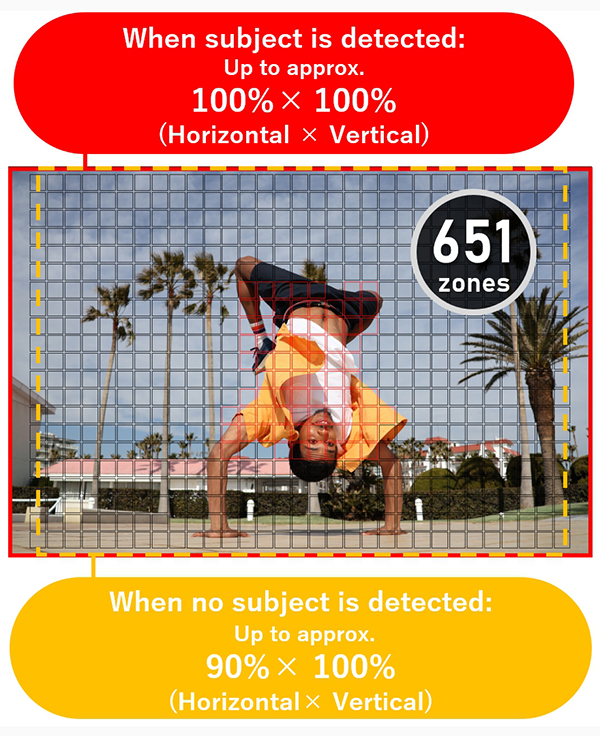
The EOS R10’s uses the Dual Pixel CMOS AF II system, where each image sensor pixel has two photodiodes that enables it to perform both imaging and phase difference detection. AF coverage is possible up to over 100% of the image area (All area AF/ when a subject is detected). The AF area is further subdivided into 651 zones for more precise focusing, and these, together with the camera’s subject detection and tracking capabilities, ensure accurate focusing all the way to the edges of the image.
EOS R10/ RF-S18-45mm f/4.5-6.3 IS STM/ FL: 18mm / Manual exposure (f/4.5, 1/3200 sec)/ ISO 400/ WB: Auto
When the subject detection system is set to prioritise people, it can detect and recognise human eyes, faces, heads, and torsos. This helps it to keep human subjects firmly in focus, even for scenes with intense, unpredictable movement such as the breakdancing scene above, where the focus falls on the main dancer’s eyes and face if they are visible, and detects his head and body to keep him in focus if his face is blocked.
In Animal Detection Priority mode, the eyes, face, and whole body of dogs, cats, and birds can be detected, and the system is optimised to track large, unpredictable movements of animals. In Vehicle Detection Priority mode, the camera detects motorsports vehicles (two-wheel and four-wheel drives), and can also recognise and sustain focus on them by “grabbing” parts of the whole, such as part of helmet of drivers of open-type vehicles and motorcycle riders. For both Animal and Vehicle Detection Priority modes, people will be detected if no animal/vehicle is in the frame.
The subject detection capabilities of the EOS iTR AF X on the EOS R10 are similar to those on the EOS R3. For more information, see:
Subject detection via deep learning; tracking via EOS iTR AF X
New 24.2-megapixel image sensor: Quality beyond the pixel count
Newly developed 24.2-megapixel APS-C image sensor
The EOS R10 features a newly developed Dual Pixel CMOS sensor with 24.2 effective megapixels. The pixel count is sufficient for making commercial A3-size prints and should satisfy most image uses ranging from social media posting to printing.
Excellent resolution beyond the numbers
While the EOS R10’s pixel count resolution is similar to that of many existing EOS APS-C cameras, its visual resolution goes beyond what the numbers suggest. This is due to the high optical and imaging performance made possible by the RF mount, combined with the advanced processing abilities of the DIGIC X image processing engine. Together, they enhance image resolution, ensuring that subtle details and textures are rendered naturally with fine delicacy.
EOS R10/ RF85mm f/2 Macro IS STM/ FL: 85mm / Manual exposure (f/2, 1/200 sec)/ ISO 100/ WB: Auto
Excellent low light performance
The advanced noise reduction processing capabilities of the DIGIC X image processing engine support native ISO speeds of up to 32,000 during still shooting (expandable to ISO 51,200) and up to ISO 12,800 during video shooting (expandable to ISO 25,600). This promises clean images and footage with barely any visible noise, whether you are shooting night scenery, in a dim indoor location, or some other low light scene.
EOS R10/ RF-S18-45mm f/4.5-6.3 IS STM/ FL: 22mm / Aperture-priority AE (f/8, 1/30 sec, EV +0.3)/ ISO 25600/ WB: Auto
Extra reach when telephoto shooting
Extra reach when telephoto shooting
Slightly smaller than a 35mm full-frame sensor, an APS-C sensor provides extra advantages great for those who love having more reach. The 1.6x telephoto effect, intrinsic to all APS-C sensors, gives you the same “zoomed in” effect as when using the 1.6x crop mode on a full-frame EOS R camera—but with the entire image sensor resolution. Shooting in the 1.6x crop mode on the 45-megapixel EOS R5 yields an image that is approximately 17.3 megapixels, whereas the EOS R10 yields images that are 24.2 megapixels. With the EOS R10, not only do you get more reach on the same lens, you can also enjoy bigger, higher resolution images.
Learn more about the difference between full-frame and APS-C cameras in:
Full-Frame vs APS-C Camera: Which Should I Choose?
New features: Panorama Shot and In-camera Depth Compositing
New features: Panorama Shot and In-camera Depth Compositing
When shooting subjects such as vast, expansive landscapes and tall skyscrapers, even an ultra-wide-angle lens may not be enough to capture them in their entirety. The new Panorama Shot SCN mode automatically shoots up to 200 images at 5 fps as you pan the camera and stitches them in-camera to create ultra-high-resolution panoramas. The resulting images can be up to 2,800×25,600 pixels (horizontal × vertical) when the camera is held in the horizontal position, and up to 25,600×4,208 pixels when the camera is held in the vertical position.
SCN mode: Panorama Shot
Shot while panning horizontally with the camera held in vertical orientation. Original image size: 24,512× 4,208 pixels
EOS R10/ RF24-70mm f/2.8L IS USM/ FL: 45mm/ Panorama Shot (f/3.2, 1/30 sec/ ISO 4000)
See larger image (resized to 4000 x 688 px)
Focus bracketing and in-camera Depth Compositing
It can be surprisingly difficult to deep focus and get an image sharp all the way from the foreground to the background without either becoming blurred. To some extent, this can be achieved by narrowing the aperture, but at a certain point, diffraction would set in and cause sharpness to deteriorate. During close-up photography of small subjects like flowers, insects, or small accessories, it can be even more difficult to ensure that the entire subject is in sharp focus due to the shallower depth of field.
In such cases, many photographers will use focus bracketing and then composite (focus stack) the images to achieve their intended effect. The EOS R10 comes with a new Depth Compositing function, which merges focus bracketed images in-camera so that you can check the results on the spot.
EOS R10/ RF100mm f/2.8L Macro IS USM/ FL: 100mm/ Aperture-priority AE (f/11, 1/5 sec, EV -2)/ ISO 100/ WB: 4800K/ Focus Bracketing + In-Camera Depth Compositing
Video features: Oversampled 4K, HDR PQ, Livestreaming
Video features: Oversampled 4K, HDR PQ, Livestreaming
The EOS R10 provides ample video features for an aspiring video creator. Leveraging on its number of megapixels, which comfortably exceeds that required for 4K, it offers high-quality 4K UHD 29.97P/25.00P video through 6K oversampling. Those who want a higher frame rate or a larger telephoto effect can choose to use the cropped 4K UHD mode, which supports 59.94P/50.00P recording.
When shooting in Full HD, besides cropless 59.94P/50.00P, users also have a wider range of creative options, such as:
- High frame rate recording at 119.88P/100.00P for slow-motion video
- Up to 10x digital zoom
- 5 Creative filters such as ‘Old Movies’ and ‘Miniature Movie’ to give footage a unique look.
In addition to the standard 8-bit YCbCr 4:2:0 codec, the EOS R10 also supports HDR PQ recording in 10-bit YCbCr 4:2:2. (Also see: Videography FAQ: What do 4:2:2 and 4:2:0 mean?)
The EOS R10 is capable of normal continuous recording for up to 2 hours (around 30 minutes in High Frame Rate mode), except in cases of automatic stop due to factors such as internal temperature rise inside the camera or insufficient SD card space.
Supports YouTube Livestreaming
You can use your EOS R10 for high-quality livestreaming to YouTube. All you need is to link your camera to the internet and set up a livestreaming URL*.
*Before using the livestream service, image.canon registration is required. Check YouTube for the latest requirements. The live streaming on YouTube may be changed, stopped or terminated without notice. Canon assumes no responsibility for any services provided by third parties, including their live distribution on YouTube.
Movie Digital IS: 5-axis image stabilisation during video shooting

Although the EOS R10 is not equipped with an In-Body Image Stabilizer (In-Body IS), it has in-camera gyro sensors that detect camera shake, and the Movie Digital IS function which performs 5-axis digital camera shake correction during video shooting. When a lens equipped with the Optical Image Stabilizer (Optical IS) is attached, the Optical IS and Movie Digital IS work together to perform Coordinated Control IS for more effective image stabilisation. This translates to stable, seamless video even when you are shooting handheld while walking.
Other notables: Built-in flash, New Multi-function Shoe, Multi-controller etc.
Other notables: Built-in flash, New Multi-function Shoe, Multi-controller etc.
Various other features add to the EOS R10’s functionality, aiding workflow and expanding creative possibilities. This includes:
- New Multi-controller that improves the ease of AF operations
- A built-in flash
- Built-in stereo microphone capable of clearer audio recording
- New Multi-function Shoe with enhanced communication features
Like most recent EOS cameras, the EOS R10 is equipped with Wi-Fi and Bluetooth connectivity. This allows easy image and video transfer to a computer or cloud server like image.canon*, or to a paired smartphone for on-the-spot social media sharing via the Camera Connect app. You can even use your smartphone to carry out remote control shooting!
New Multi-function Shoe; three internal microphones
Like the EOS R3 and the EOS R7, the EOS R10 features a new Multi-function Shoe. Cross-compatible with the previous hot shoe, the new Multi-function shoe has a new digital interface that supports high-speed communications and power supply to compatible attached devices. This enables the use of devices such as compatible cableless microphones, where you can be assured of clear digital audio with minimal noise without worrying about the microphone’s remaining battery level.
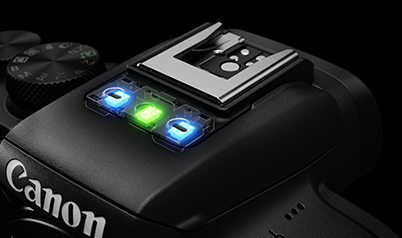
The EOS R10 is equipped with three microphones located in front of the Multi-function shoe. Two are stereo microphones, whereas the third microphone detects noise in the camera for noise cancellation purposes. Altogether, they ensure clearer sound recordings.
Quick Control Dial and Multi-Controller

A multi-controller works like a joystick, allowing intuitive control over the position of the AF point. Located nearby, the Quick Control Dial is often used to control exposure, but it can be assigned to aid AF operations.
Focus mode switch

A focus mode switch is located on the front of the body. This allows for easy switching between AF and MF modes even when using lenses without such a switch. The button in the centre is the depth-of-field preview button.
Built-in flash

The pop-up flash has a guide number of approximately 6 (ISO 100, metres). The EOS R10’s strong low light abilities mean that you can take beautiful images even without a flash in dim lighting situations. However, the built-in flash gives you more creative possibilities!
Supports USB-C charging and power supply

When Battery Pack LP-E17 is inserted, you can charge or supply power to the camera from an external source using USB Power Adapter PD-E1. If the camera is switched on, it will run on power from the external source. Switching the camera off will charge the camera battery.
A camera that sets new standards for photography and videography enthusiasts
The specifications of the EOS R10 put it on par with high-end DSLR EOS cameras. However, it is now easier than before to make full use of these powerful specifications, thanks to new features such as the advanced AF system and deep learning-based subject detection and tracking, which simplify the shooting process and remove the need for complicated operations.
Features considered necessary for the new standards of today and beyond, all in one compact, lightweight body. That’s the EOS R10—your new, power-packed constant companion.
Sample images
EOS R10/ RF50mm f/1.8 STM/ FL: 50mm / Aperture-priority AE (f/1.8, 1/1250 sec, EV +0.3)/ ISO 100/ WB: Auto
EOS R10/ RF100-500mm f/4.5-7.1 L IS USM / FL: 500mm / Shutter-priority AE (f/8, 1/1000 sec)/ ISO 400/ WB: Auto
EOS R10/ RF-S18-150mm f/3.5-6.3 IS STM/ FL: 18mm / Manual exposure (f/3.5, 1/2500 sec)/ ISO 100/ WB: Auto
Choosing your first camera and wondering if the EOS R10 is right for you? Here are 7 Things to Consider When Choosing Your First Canon Camera that should help you make a better choice!
Receive the latest update on photography news, tips and tricks.
Be part of the SNAPSHOT Community.
Sign Up Now!
































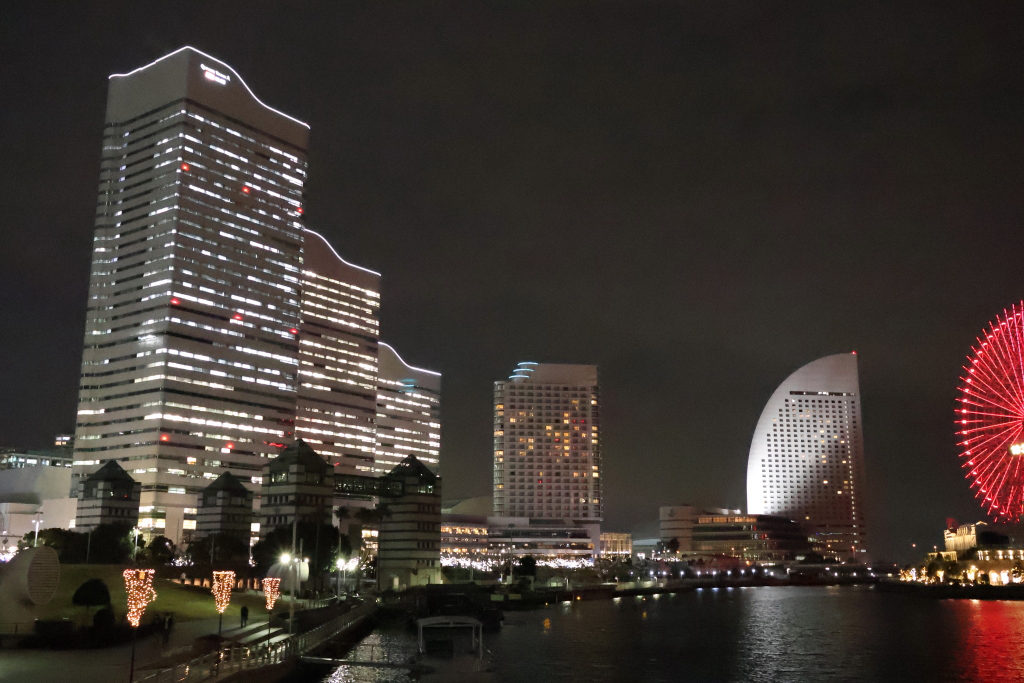
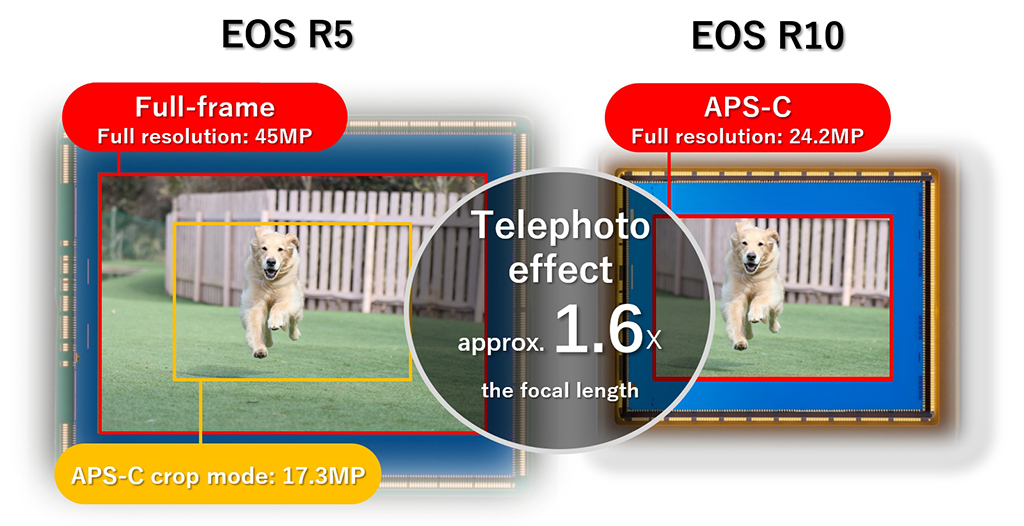


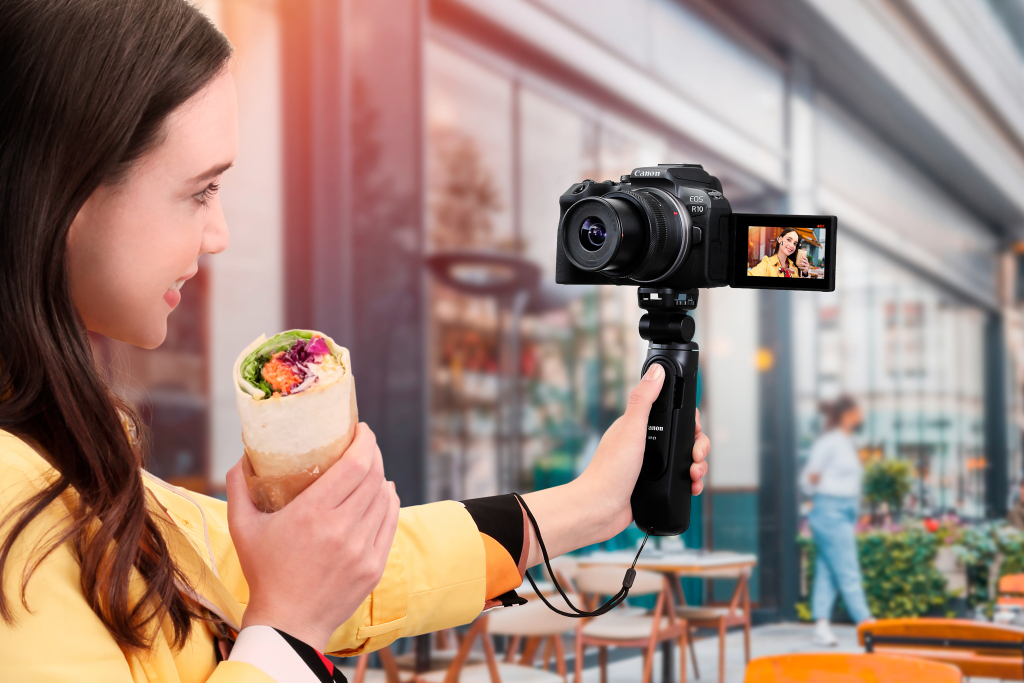
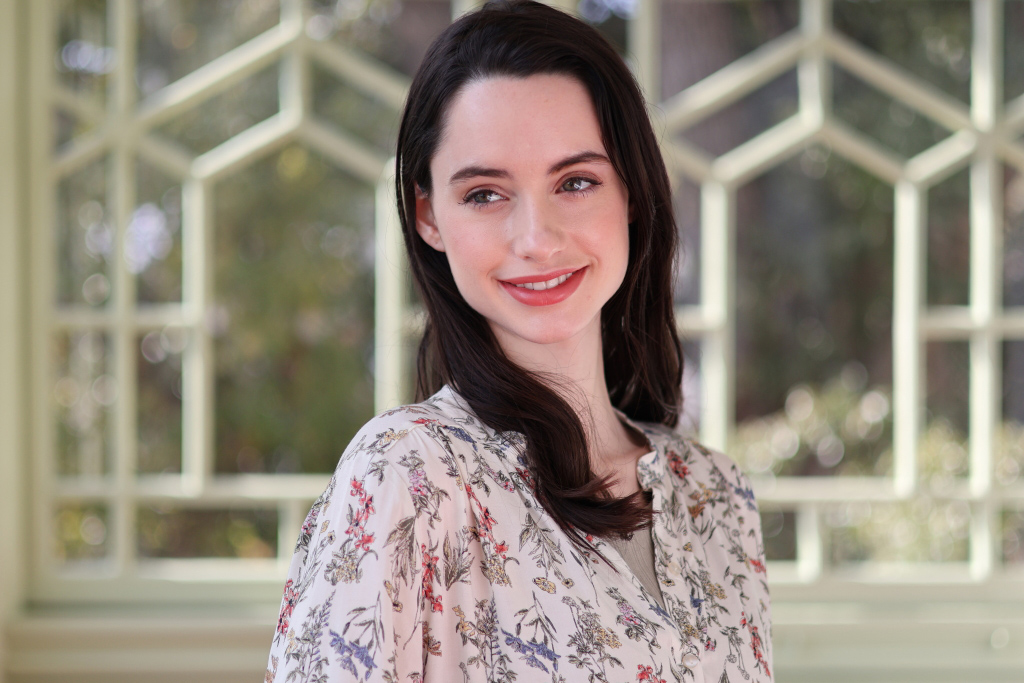


.JPG)
.JPG)
.JPG)


